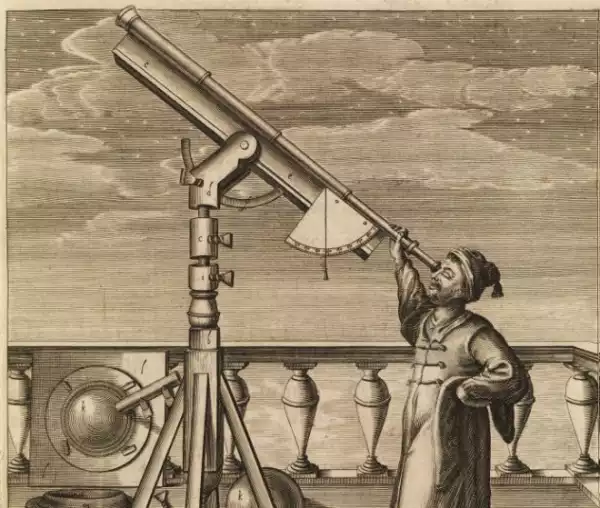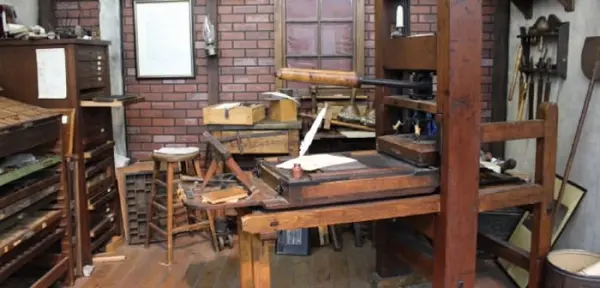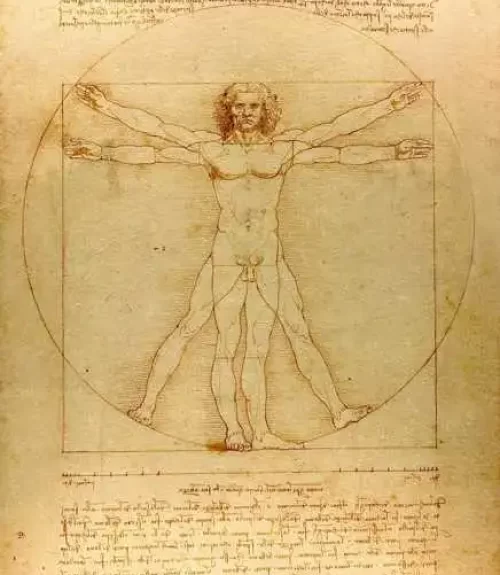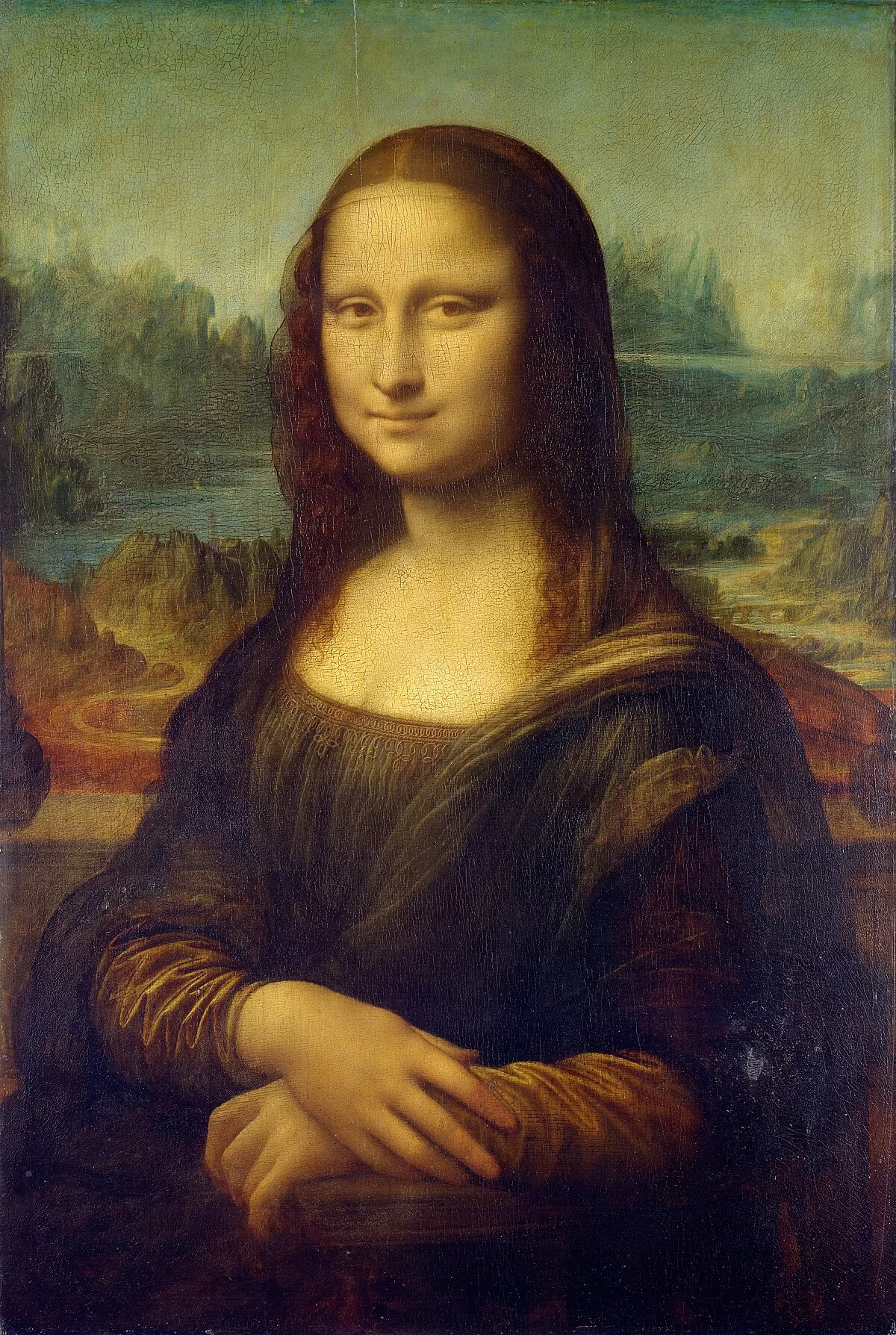Sometimes we don’t need to reinvent the wheel, and digging in the past we can find our answers. The Italian Renaissance Artists have several learnings for our present.
But let’s start from the beginning. What is the Renaissance?

Michelangelo Buonarroti, The Last Judgement, c. 1541, Rome, Sistine Chapel
Renaissance is the age of enlightenment in Europe, a period of great cultural, political, economic, and artistic rebirth between the 14th and 17th centuries.
Renaissance follows the medieval time, which was the era of ignorance, war, barbarism, and pandemics. Renaissance is also important in human development; it has changed the way the world thinks.
It affects every aspect of life, such as art, culture, science, literature, and technology, giving a new dimension to every field, which is why it is called the “Rebirth”. It is also known as the era of development and discoveries, blossoming with creativity and curiosity.
The Renaissance started in Italy, but it is also believed that Italy was not a country at that time: it consisted of kingdoms and papal states. During the Dark Ages, millions of people lost their lives due to the pandemic, which resulted in fewer people with greater wealth. The Medici family of Florence was a wealthy Italian family, influenced by ancient Greek and Roman civilization, and they started a Renaissance movement.
The movement was first started in Florence and expanded to other states of Italy such as Milan, Venice, Bologna, Ferrara, and Rome. In this way, Italy is regarded as the Home of the Renaissance, and this is why we have so many Italian Renaissance Artists.
Renaissance was also inspired by Humanism Philosophy. According to the doctrine of Humanism; “Man is considered to be the center of his Universe”. Humanism is the major intellectual movement of the Renaissance.
Humanistic people believed that man should contribute to other fields of life except for religion, and human achievements should be appreciated in art, science, literature, and education.
Francesco Petrarca is the “father of Humanism”, and according to Petrarca, Man should use his creative and intellectual powers in art, science, literature, and technology.
Humanism reacts against the utilitarian approach and believes in rational thinking; it also gives importance to the right of every human being. Man can structure his values to shape his life.
It also believes in the ability of men to think and decide for themselves, also called an optimistic philosophy. Humanism encourages people to think critically, to learn and write independently, and to make their own decisions.
Renaissance is also called the “Age of Discoveries”, which plays many significant roles in the development of the modern world. It is a cultural and intellectual movement rather than a historical period.
Renaissance Contribution in Science, Technology, and Mathematics
Before moving to Italian Renaissance artists, let me share a couple of thoughts with you. I hope this will help to better understand the context in which the Italian Renaissance artists lived and worked.

In the Dark Ages, people believed in magic, evils, and spirits. Renaissance was a significant contribution to science and technologies.
Some examples of the discoveries and inventions of this period are the printing press, woodblock printing, telescope, microscope, pendulum, barometer, eyeglasses, and musket.
Scientific discoveries also bring about significant changes in people’s thinking.
Copernicus is the first person who proposes the Heliocentric Theory of the universe and challenges medieval society. According to Copernicus Earth revolves around the sun, and the sun is the center of our solar system.
Galileo introduced scientific methods, the first in human history, in which he generally approved and disapproved of his theories based on his experiments and data.
The Gutenberg printing press is one of the greatest discoveries in the world, helping to spread rational and corrective ideas among people and thus to change their way of thinking. Block printing was introduced in Europe between 1250 and 1350, but it was fully developed by Johannes Guttenberg in 1440.
There are many significant developments in mathematics during the Renaissance such as the invention of calculus, geometry, and algebra. The study of motion was also discovered during the Renaissance.
Renaissance scholars also made a great contribution by translating unknown works of Archimedes. The people of Europe made significant developments such as town planning and manufacturing of gunpowder.
Renowned scholars who have played a very important role in mathematics are Renee Descartes, Isaac Newton, and Pascal. Thanks to them, Europe had an era of enlightenment and development.
Renaissance in Literature
This was the first time that Italian scholars and poets began writing in their mother tongue instead of Latin or French. Italian writers began to promote their native language in the world. Thus, it was a way to introduce their culture, values , and language to the whole world.

Major changes in Italian Literature occurred during the Renaissance, the theme of the poetry changed from courtly love to Platonic.
Many Italian poets and authors start imitating the style of ancient Latin and Greek Authors. The Italian scholars focused on the study and translation of works by ancient Greek and Latin authors such as Aristotle, Plato, Homer, Virgil, and Cicero. Like science and philosophy, Renaissance contributes a lot to the development of literature.
Poetry is one of the most valuable forms of literature written during the Renaissance. Poetry develops further into types such as lyric, tragedy, elegy, and pastoral poetry. The important Italian writers of the Renaissance era are Dante, Petrarca, and Machiavelli.
Petrarca’s sonnets were translated by Thomas Wyatt and many English Poets get the idea of sonnets. He is a notable example of an Italian Poet and the most prominent writer of Italian Sonnets. He is also famous for his works written in the Italian native language
Giovanni Boccaccio is another famous Italian writer; whose work is also a source of inspiration for many English authors during the Renaissance. His major work is The Decameron.
The literature during the Renaissance also leads to another major branch of writers i.e. Metaphysical poets. Metaphysical poetry started in the 16th and 17th centuries, after the end of the Renaissance era. It is a kind of poetry with the theme of nature, love, and spiritual words.
Therefore, the Renaissance played an important role in literature and changed the style and thinking of many authors.
Italian Renaissance Artists and the Importance of Humanism
Traditional Chinese art looked at the Earth from a Confucian mountain top; Japanese art looked closely around screens; Italian Renaissance art surveyed conquered nature through the window or door-frame of a palace. For the Cro-Magnons, space is a metaphysical arena of continually intermittent appearances and disappearances.- John Berger
Art and Architecture are the most influential disciplines of the Renaissance period. It is a period of revival and creativity through which many artists learn and develop new forms of art.

Humanism philosophy has a huge impact on Italian Renaissance Artists. It gives new theories to artists that help in the development of art. The subjects of art before the Renaissance are religion, spirituality, and churches, while Humanism provides the idea that man is the center of his universe and there are other aspects of life to which a man should contribute instead of religion only.
Humanism placed a greater influence on pleasures and social values instead of religion. However, humanistic people didn’t deny the importance of religion. Naturalism had its impact on the forms of Italian art, while Humanism influenced the subject matter of art.
Italian Renaissance Artists created artistic principles, that were associated with the artistic standards of ancient Greeks and Romans. Naturalism, Classical Humanism, Perspective drawing, and the development of oil painting are the key elements of Italian Renaissance Art.
Linear Perceptive Drawing was invented by Filippo Brunelleschi in 1435. The Mirriam-Webster Dictionary defines perspective as “the technique or process of representing on a plane or curved surface the spatial relation of objects as they might appear to the eye”.
Oil painting is another new way of painting created by Italian Renaissance Artists, used to capture European culture with intense colors.
Humanism changes the ideology of art in many ways. This philosophy rejects symbolic figures and emphasizes individual figures. Humanism also affects the form of art, it also introduces the new medium of art i.e. Linear Perceptive drawing and oil painting. It also promotes realism and naturalism in art.
The highest form of painting has a theme of Virtuous, it reflects the idea that man is responsible for his fate. But also religion is another important subject for Italian Renaissance artists and almost all of them paint religious figures.
The most important religious artwork of Renaissance art is The Last Supper by famous artist Leonard da Vinci.
Anatomy is also a significant Renaissance art theme, the famous artworks are the marble sculpture of “David” and Vitruvian Man.
The Four stages of the Italian Renaissance Artists
Italian Renaissance Art is divided into four distinct stages.
- Proto-Renaissance
- Early Renaissance
- High Renaissance
- Venetian Renaissance.
The Proto-Renaissance also called as Pre-Renaissance Era started in the late 13th and early 14th centuries. Naturalism philosophy was highly developed during Proto-Renaissance. It was also inspired by the beauty of ancient classical sculptures and classical Humanism. Proto-Renaissance paintings are more natural with the element of realism, naturalism, and humanism. The famous Italian Renaissance Artists of Proto-Renaissance are Giotto di Bondonne, Duccio di Buoninsegna, Simone Martini, Ambrogio Lorenzetti, and Pietro Lorenzetti.
Sculptures and portraiture were another significant medium of Italian Renaissance art. Renaissance artists were inspired by Greek and Roman sculptures. In Greek and Roman art, portraiture is a medium of art that is expected to be the perfect human figure, that was based on the idea of humanism, naturalism, and realism.
Early Renaissance art leads to the invention of perspective drawing, with greater emphasis on the drawing of human figures, buildings, and landscapes. Early Renaissance art involves the themes of naturalism, humanism, and Christianity. The famous artists of this stage of Italian art are Masaccio, Donatello, Fra Angelico, Pietro Perugino, Fra Filippo Lippi and Sandro Botticelli.
The famous Italian artist, painter, architecture, and engineer Giorgio Vasari called the High Renaissance art “the highest peak of artistic achievement”. Some of the techniques that were used in High Renaissance art are linear perspective, realism, tone contrast, harmony, and balance. The three main significant artists of High Renaissance art are Leonardo da Vinci, Michelangelo Buonarroti, and Raphael.
The Venetian Renaissance painting focuses on the intense colors, patterns, and effects of light. It also gives rise to the painting of different characters of Renaissance Literature. Venetian Renaissance was started in the late 14th century by Giovanni Bellini. He did experiment with the new technique of art such as oil painting. The famous work of Giovanni Bellini is the landscape backgrounds painting. Tintoretto is another popular Venetian Renaissance artist, famous for his weightless figures, angular perspectives, and dramatic lighting.
Leonardo Da Vinci. The Master of Italian Renaissance Artists
Leonardo is a great Italian painter, artist, sculptor, scientist, and engineer. He is also called The Great Master of Italian art.

He is one of the three main artists of high Renaissance art; others are Michelangelo and Raphael.
He is famous for his best-known artwork, the painting of the Mona Lisa, and The Last Supper Art.
These two paintings are still admired by people and regarded as the world’s famous artwork. He is a master of oil painting and chiaroscuro techniques.
He was born in Vinci, the town of Italy. He was an illegitimate child and has no formal education except basic reading, writing, and math. He became an independent Master of Arts in 1482.
The theme of his painting is mostly realism. Leonardo spent much of his life trying to create realistic paintings. For this purpose, Leonardo studied Science and anatomy.
The Mona Lisa’s famous smile is the result of Leonardo’s deep study of optics, science, anatomy, and art.
Leonardo’s paintings depict inner emotions and have a deep message inside such as the incredible painting of the Mona Lisa. The painting gives a new perspective from different angles. If you move your eyes along the painting, the smile of Mona Lisa flickers on and off.
The Last Supper is another famous artwork by Leonardo with a religious theme. This painting depicts a biblical moment when Jesus Christ takes dinner with his disciples and names the person who will betray him.
Leonardo’s paintings are characterized by innovation, a study of human anatomy, facial expressions, physiognomy, emotions, intense color contrast, and effective use of light.
Virgin and Child with St. Anne is another famous painting of Leonardo with the theme of figures in a landscape. This painting also has a religious theme, in which Marry is sitting with her mother and Child Christ is playing with a lame. The painting influences many contemporaries of Leonardo such as Michelangelo, Raphael, and Andrea del Sarto.
Raphael
Raphael was a contemporary of Leonardo and Michelangelo and is known as a master of High Italian Renaissance Art.
He was excellent in history painting, religious painting, and portraiture.
He was the son of a painter, Giovanni Santi, who was the court painter to the Duke of Urbino. Thus, art is in his blood. He is best known for his paintings of the Madonna and The School of Athens.
Raphael’s style of art was inspired by his master Perugino, there were many similarities in the paintings of Perugino and Raphael. Later, Raphael was inspired by several local artists such as Fra Bartommeo.
He was also inspired by Leonardo’s style of art. He mostly used the technique of oil painting in his work. He is famous for intense rich colors, clarity, perfect human figure, and serenity in his work.
The School Of Athens is a remarkable artwork of Raphael, in the painting he paints and gathers all the famous classical philosophers under Renaissance building.
The School Of Athens was considered to be the celebration of Greek Philosophy, and Raphael also paid homage to every Greek Philosopher in his painting.
Raphael’s painting characterized the qualities of harmony and ideal beauty of High Renaissance Art. He is a master in many High Renaissance art techniques such as sfumato, perspective drawing, anatomical correctness, emotionality, and expression.
His work is a unique amalgam of High Renaissance Art techniques and Renaissance artist’s style.
The Marriage of the Virgin is the most famous painting of Raphael with the theme of religion. The painting shows the marriage between religious figures, Mary and Joseph. Raphael made this painting with the inspiration of his master Perugino.
The most famous paintings of Raphael are Disputation of the Holy Sacrament, Sistine Madonna, Triumph of Galatea, Woman with a Veil, La Fornarina, and The Transfiguration.
Michelangelo
Michelangelo is a notable Italian painter, sculptor, and architect. He is one of the greatest artists of the Renaissance, famous for his incredible work Sistine Chapel, The Last Judgement.
His paintings are characterized by the themes of realism, intensity, and psychological insight.
He was born in the small village of Italy known as Caprese. He also works in the Pope’s tomb and uses many art techniques such as the fresco technique.
The Last Judgment is an incredible artwork done by Michelangelo. The Last Judgment was painted after 25 years of Sistine Chapel painting. The subject of the painting is related to religious themes, mainly the returning of Jesus to his creator. The painting also depicts the horrible scene of the day of Judgment. Michelangelo paints 300 muscular figures, in various dynamic poses.
The figures were painted in a state of motion, and his figural style was appreciated by people.
Michelangelo is the greatest sculptor in history, according to his famous quote “Every block of stone has a statue inside it, and it is the task of the sculptor to discover it. I saw the angel in the marble and carved it until I set him free”.
The most famous artworks of Michelangelo are the Pieta and the sculpture of David.
Other famous people during the Renaissance
Niccolò Machiavelli: The Father of Modern Political Science
In the realm of politics and philosophy, Niccolò Machiavelli made waves with his seminal work, “The Prince.” Often misunderstood, Machiavelli’s treatise on political power, leadership, and realism presents a pragmatic approach to governance, divorced from traditional moral values. His insights into the mechanisms of political control and his candid advice to rulers have cemented his legacy as the father of modern political science.
Galileo Galilei: The Starry Messenger
Galileo’s contributions to science heralded the dawn of the new age of astronomy and physics. His improvements to the telescope and consequent astronomical observations challenged the prevailing geocentric models of the universe, eventually leading to the widespread acceptance of heliocentrism. His advocacy for the importance of observation and experimentation laid the groundwork for the scientific method, making him a pivotal figure in the transition from natural philosophy to modern science.
The Renaissance Woman: Sofonisba Anguissola
While the Renaissance is often criticized for its gender exclusivity, women like Sofonisba Anguissola carved their niche in a predominantly male world. A pioneering female artist, Sofonisba gained recognition for her portraits, which were lauded for their emotional depth and psychological complexity. Her success opened the doors for future generations of women in art, challenging societal norms and expanding the boundaries of what women could achieve in the public sphere.
Italian Renaissance Artists – Conclusions

The Renaissance had a great impact, and it changed the world a lot. It is a period of learning and exploring new things, an era of discoveries and innovation.
There is also the discovery of new philosophies such as Humanism and Naturalism., that focus on the individual’s education, decisions, and values. Renaissance Art also leads to the discovery of new art techniques and the development of modern science.
The Italian Renaissance was not just an era of heightened cultural activity; it was a crucible of ideas, innovations, and discoveries that continue to shape our world. The legacy of its leading figures—da Vinci’s boundless curiosity, Michelangelo’s David and his pursuit of beauty, Machiavelli’s political acumen, Galileo’s scientific rigor, and Sofonisba’s trailblazing courage—reminds us of the power of human creativity and ingenuity.
As we strive to push the boundaries of what is possible, we carry forward the spirit of the Renaissance, a testament to the incredible feats humanity can achieve when we dare to dream, explore, and innovate.
These luminaries exemplify the Renaissance ideals of individual achievement and the belief that humans can achieve great things through observation, study, and creativity.
Their works and lives continue to inspire, reminding us that the pursuit of knowledge and the cultivation of intellect and skills have the power to change the world. The Renaissance stands as a beacon of human potential, urging us to explore, question, and create, just as its titans did centuries ago.
If you are looking for your personal piece of Italian art, you can find inspiration in the Paolo Modena Photography Collection.
Editor’s note: this post was originally published in February 2023 and has been completely revamped and updated for accuracy and comprehensiveness.
WANT TO KNOW MORE ABOUT PAOLO MODENA?
Sing up to join a community of more than 200 art lovers, receive information about Paolo Modena’s fine art photography, and be the first to know about upcoming artworks.
Related Posts:
Paolo Modena
My name is Paolo. I am a photographer. I consider myself fortunate to have grown up in Italy, surrounded by the art that is the envy of the world. I enjoy photography because it has caused me to fall in love with light, shade, and color. I see the world around me with fresh eyes every single day. And sometimes, when the mood is right, I just sit back and enjoy the moment without taking a photo.
